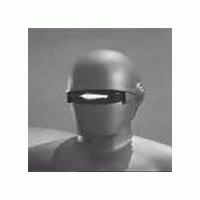Mesaĝoj: 18
Lingvo: English
OFR185683 (Montri la profilon) 2021-aŭgusto-29 14:24:34
I have been reading about the accusative case, and I think I sort of understand it, but I am thinking, it seems kind of confusing, and since Esperanto is supposed to be as easy as possible, why have something confusing like this? What are all the benefits of the accusative that out-weigh it's confusing-ness?
I like being able to change the word order by having the -n ending to make clear what is the object, but some other accusatives just seem unnecessarily confusing.
What do you think?
Metsis (Montri la profilon) 2021-aŭgusto-29 18:23:39
The language learning site Duolingo has a good summary post about the use of n-suffix in Esperanto. The post lists five cases, of which the direct object is the first one. As you yourself have noticed the accusative frees the word order tremendously and keeps the language clean of formal subjects (What is that "it" in "It is raining"? or what is that "there" in "There is a tree in the forest"?).
Now when it comes to other uses of the n-ending, it is true that you could have come along without it, but you would have needed some other system.
Use 2: with location marking prepositions to show movement
If you would not have the n-suffix, you would need more prepositions.
Use 3: time span
If you would not have the n-suffix, you would need another way to denote time span, either with the existing preposition dum or with a new one. The problem with dum is that it got defined to show an action which takes place within the given time span but does not necessarily cover it completely.
Use 4: measurement
This is perhaps the trickiest one of these. Remember that an adjective attribute can come before or after the noun, so if you just say La ŝtofo estas unu metro longa this is the same as …unu longa metro, which is here nonsense because the length is a feature of the cloth, not of the unit metre. So you need a marker to denote that relationship. During the early years the "joker" preposition je was used for this (among its other uses), so one said La ŝtofo estas longa je unu metro. While you still can say that way, it surely sounds old-fashioned since for some reason it became preferred to use the n-ending to mark a measure.
Use 5: greetings
This is just an extension of the direct object use.
Summary
Perhaps the use 2, showing movement, is the heaviest argument for the n-ending. Without it you would have needed a pile of new prepositions. Instead of those now you have a neat rule and a clear connection between en la ĉambro and en la ĉambron.
OFR185683 (Montri la profilon) 2021-aŭgusto-30 14:58:08
 ))
)) nornen (Montri la profilon) 2021-aŭgusto-31 17:15:41
Esperanto is supposed to be as easy as possible, why have something confusing like this?As Metsis already pointed out, "confusing" in most of the cases is synonym to "new" and "unknown". When your mother tongue has cases, accusative surely won't be confusing at all. The lack of it could be confusing. [3]
Your argument that Esperanto is supposed to be as easy as possible and hence shun everything confusing or superfluous, could be extended to many other aspects of it.
Why have something as confusing as the definite article? Many languages make do without it, so why have it in Esperanto?
Why have something as confusing as the plural marker -j? Many languages make do without it, so why have it in Esperanto?
Why have something as confusing as the future tense? Many languages make do without it, so why have it in Esperanto?
Why have something as confusing as tenses at all? Many languages make do without it, so why have it in Esperanto?
You see, with each of these questions we approach a minimalist approach for a constructed language. At some point we will end up at Toki Pona which was designed to be minimalistic. And in my opinion Toki Pona's grammar is a lot clearer and easier than Esperanto's, however its artificial limit on the number of words (roots) makes it virtually unusable [1].
Zamenhof could have designed Esperanto as an isolating language: no inflection, no suffixes, words never change their form. It would have worked equally well and many languages in the world are isolating. He however took the inflectional approach and lo: Esperanto was born.
I think that Zamenhof did have simplicity in mind, but not maximal simplicity. Also simplicity is in the eye of the beholder. What is a "simple" language for an indoeuropean speaker, might not be simple for a sinotibetan speaker.
As far as I know, Zamenhof knew Germanic (German), Romance (Latin), Slavic (Polish, Russian), Hellenic (Ancient Greek) and Semitic (Hebrew) languages. From these known languages he drew his inspiration. Esperanto is surely simple if you have a similar background. Maybe Esperanto has an accusative because Zamenhof couldn't imagine how a language would work without; or that it would cause more problems than it solved. Maybe Esperanto has a plural-ending, because Zamenhof couldn't imagine that it is possible to have languages without. Maybe all the features of Esperanto are what Zamenhof (erroneously) considered to be "linguistic universals" or what he considered to be indispensable.
Had Zamenhof lived in this century, with access to the internet and the WALS atlas, with access to all papers published on linguistics in the last hundred years, Esperanto surely would look quite different.
Summa summarum, Esperanto is doing a balancing act between expressiveness, conciseness and simplicity. You cannot have all three at once. All three of those are subjective, so maybe we should add "expressiveness, conciseness and simplicity on an indoeuropean canvas".
- - - -
[1] Now a Toki-Pona-esque grammar on top of an Esperanto-esque lexicon, that would be quite something.
[2] As to definite article and plural: What's the difference between the following statements: A) Leono estas besto. B) La leono estas besto. C) Leonoj estas bestoj. D) La leonoj estas bestoj. Don't all of them mean "if X is a lion, then X is an animal"?
[3] Let's take the English "He saw him". In Esperanto it is "Li vidis lin.", but in Esperanto without accusative it would be "Li vidis li." Now what sounds more confusing, the first which translates back to "he saw him" or the latter which translates back to "he saw he".
sergejm (Montri la profilon) 2021-aŭgusto-31 19:17:17
In fact, Esperanto is creole language, which appeared with grammar at once, without stage of pidgin.
OFR185683 (Montri la profilon) 2021-septembro-01 15:52:26
Re-expressiveness, conciseness, simplicity: that is true!
[2] Oh, you are so right!! I never thought about that before!!!
[3] good point!
sudanglo (Montri la profilon) 2021-septembro-03 13:58:46
1. La patro amis ŝin pli ol la patrino. 2. La patro amis ŝin pli ol la patrinon
1. The father loved her more than the mother (more than the mother did)
2. The father loved her more than the mother (more than he loved the mother)
Li farbis blanka la muron malpurigitan de la infanoj (it wasn't a white wall that was dirtied by the children.
Li aŭdis la infanojn kantantaj en la ĝardeno (he heard that they were singing). Compare with li rigardis la trajnon foirantan el la stacidomo (he watched the departing train)
No doubt others can think of more entertaining uses.
nornen (Montri la profilon) 2021-septembro-03 19:39:06
Metsis (Montri la profilon) 2021-septembro-06 06:31:37
nornen:Well, if Esperanto didn't have an accusative case, it wouldn't have a nominative case either, because it wouldn't have any cases at all.So you think that a language has no cases or at least two? Hmm, also WALS begins its classification at two, but I can think a somewhat contrived example of a language with one case that is used when the word is a direct object. All other roles ,incl. being a subject, are marked with something else (preposition, pre- or postfix). Can you then call this one case nominative?
RiotNrrd (Montri la profilon) 2021-septembro-06 15:10:49
However, if you add a case in such a way that it is used in some situations, and not in others, then you have two types of "case" related situations: where it's used, and where it isn't. One could say that you therefore automatically get two cases just by trying to have one. Although I guess it's debatable if in a language with only one explicitly marked case, the non-application of that marking would also count as a case. I think it would. In Esperanto it does, at least.


